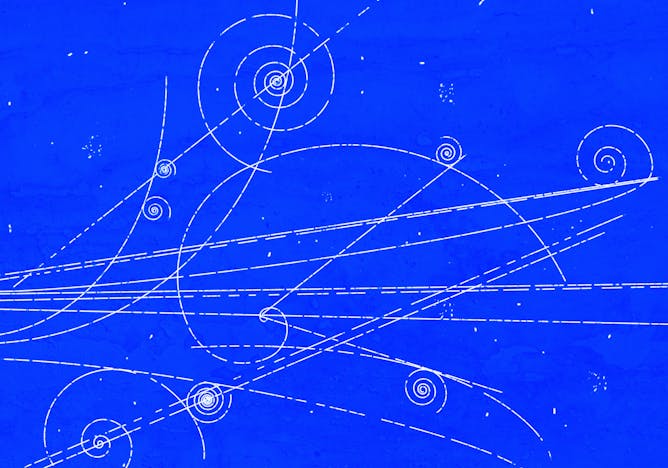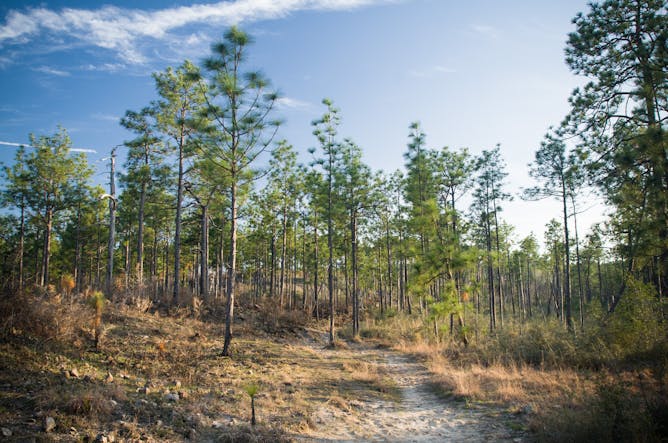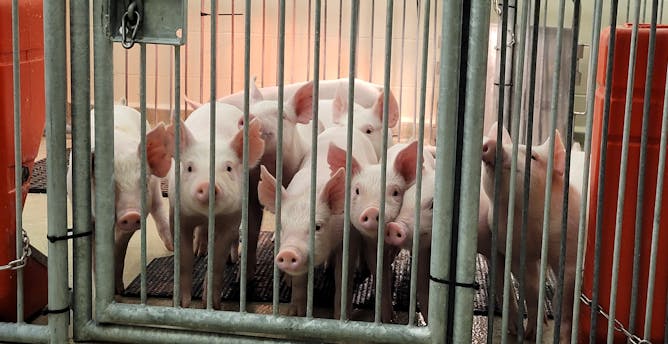|
Welcome to this week’s science and research newsletter.
You may have seen recent headlines of an experiment that raises the possibility of a flaw in the long-held Standard Model of particle physics. In measuring how a particle called the muon – basically a super heavy electron – moves through a strong magnetic field, researchers confirmed an old measurement that hints at an unknown force of nature, as two physicists involved in the work describe. But another researcher using a new calculation of how the muon should behave explains why his group believes the Standard Model is still intact.
Michigan State scholar Beronda Montgomery this month published a book that explores what plant behaviors and adaptations can teach people. In an article for The Conversation, she creates a rich picture of how plants can communicate, share resources among themselves and fungi, and self-isolate when necessary.
Mice are the most common lab animal used for medical research, but a team at Iowa State has made progress on “humanizing” pigs’ immune systems, making them more attractive for biomedical research. Two researchers involved in the work argue why alternative animal “models” can improve development of therapies for human diseases, while addressing the ethical considerations with their work.
For the rest of this week’s science news picks, see the list below and reply to this email if there’s a topic you’d like our science editors to investigate.
|

Two new papers shed light on a longstanding mystery in particle physics.
Zmeel/E+ via Getty Images
Zoltan Fodor, Penn State
For 15 years, there has been a mismatch in physics. A particle called the muon wasn't behaving the way theory predicted it should. A new theory and new experiment might solve this problem.
|

Longleaf pines support one another through mycorrhizae – mutually beneficial relationships between certain fungi and the trees’ roots.
Justin Meissen/Flickr
Beronda L. Montgomery, Michigan State University
We may think of plants as passive life forms, but they can cooperate, share resources, send one another warnings, and distance themselves from their communities when survival depends on it.
|

Pigs with human immune systems.
Ahlea Forster
Christopher Tuggle, Iowa State University; Adeline Boettcher, Iowa State University
Medical research to benefit people is first conducted in animals. Creating a new biomedical model by inserting human immune cells into pigs may lead to new insights and treatments.
|
Other good finds
|
-
Nathan Klein, University of Washington
The traveling salesperson problem is so difficult that practical solutions can never be perfect – only good enough. The challenge is coming up with the best approximations.
-
Paulo Verardi, University of Connecticut
As the US vaccinates millions more people each day, the novel coronavirus works to survive. It does this by mutating. So far, several variants are worrisome. A virologist explains what they are.
-
William Petri, University of Virginia
The one-dose vaccine developed by Johnson & Johnson is temporarily halted because of potentially serious blood clots seen in six women. An immunologist explains what this means for you.
-
Larry Brand, University of Miami
Harmful algae blooms are an increasing problem in Florida. Once nutrients are in the water to fuel them, little can be done to stop the growth, and the results can be devastating for marine life.
-
Sarah DeGenova Ackerman, University of Oregon
Adaptable neurons are tied to learning and memory but also to neurological disorders. By studying fruit flies, researchers found a mechanism that controls neuroplasticity.
|
|